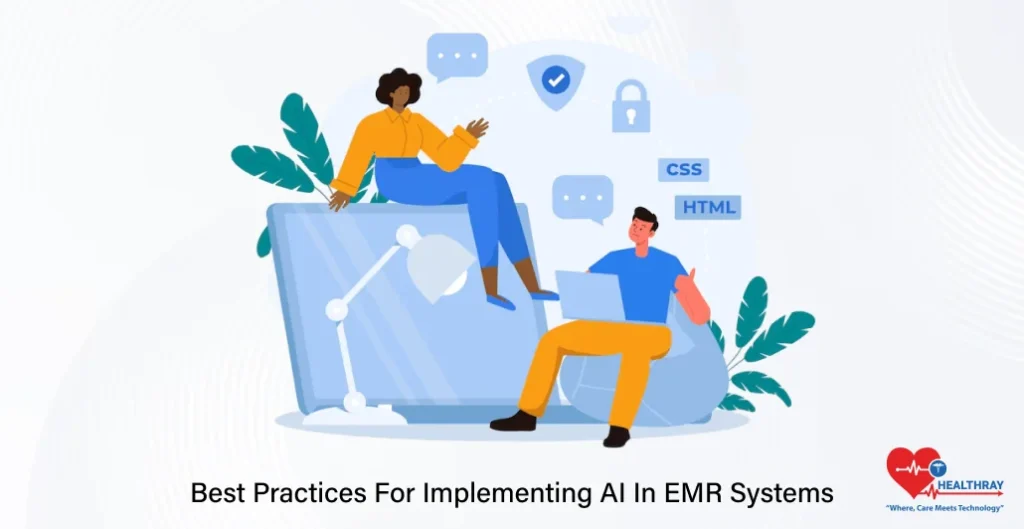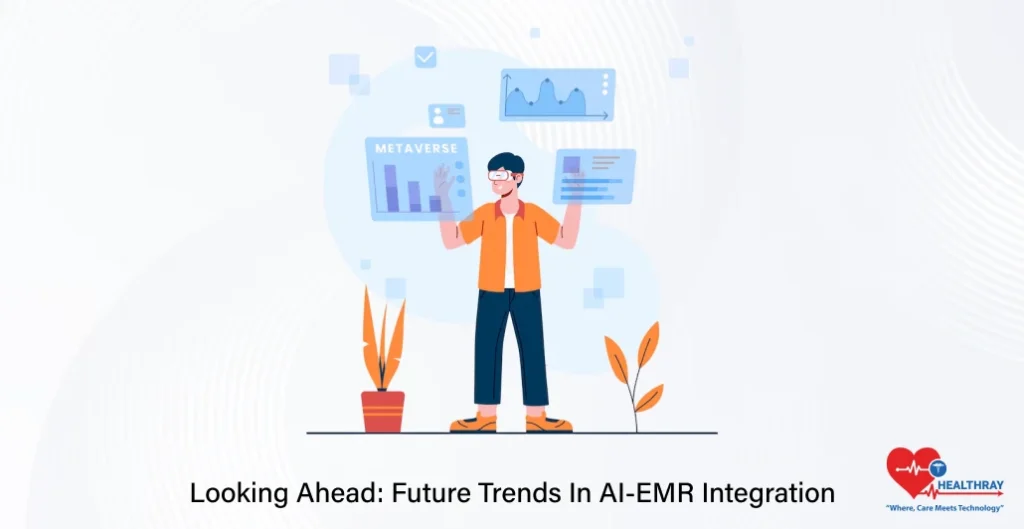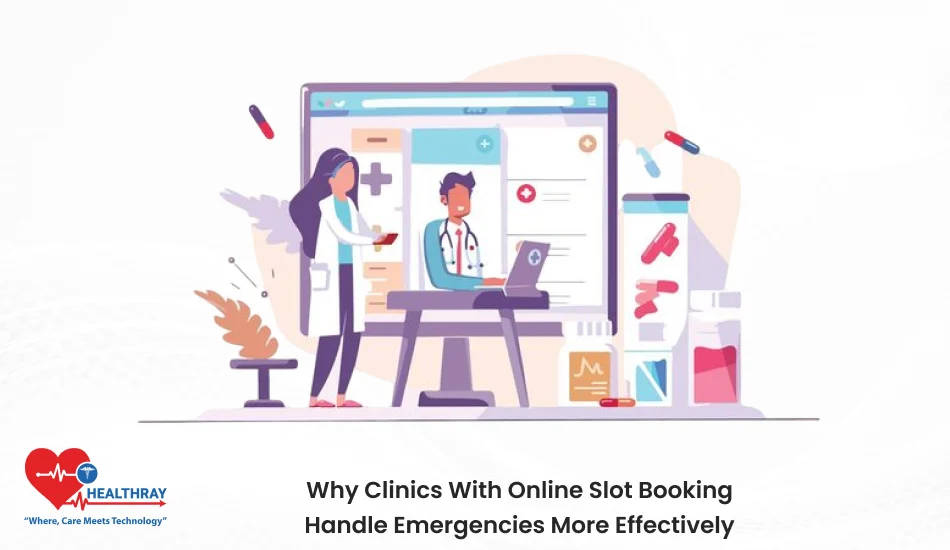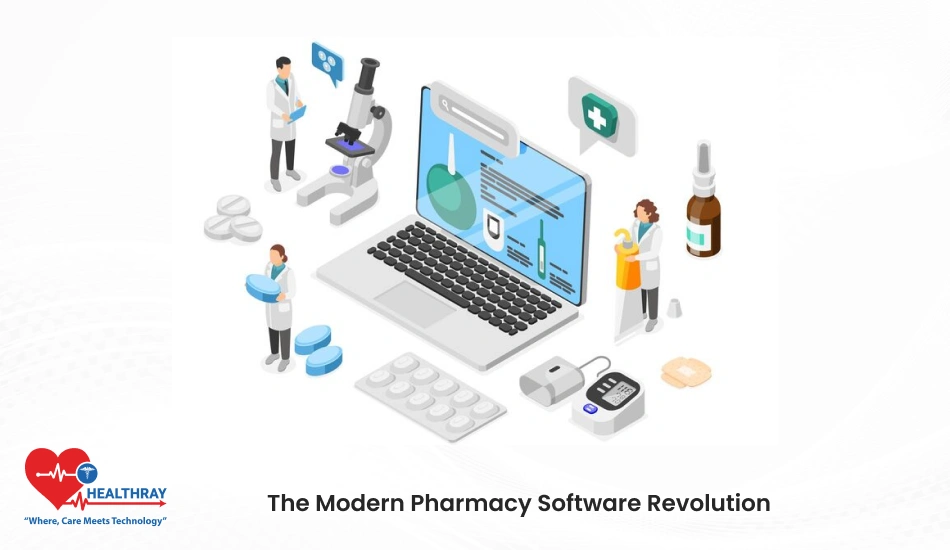Healthcare specialists, EMR developers, and administrators at hospitals are seeking a solution to this very question. Today, AI can no longer be viewed as an innovation that will be brought into the future. AI is already transforming what EMR systems do with the large volumes of data they handle every day concerning their patients, predicting results, and streamlining everyday functions. Its goal is thus clearly defined: to improve patient care while minimizing the burden on health professionals.
Aspects of how AI is currently reorganizing Electronic Medical Records systems to respond to modern events are expounded in this article. You will learn how it relates to improving decision-making; enhancing data accuracy; and mitigating bottlenecks in administration. There will also be discussion of application, challenges, and trends exemplified from the real world and future trends that show how AI goes beyond hype in health care.
What is A.I. in EMR systems?
Artificial intelligence in EMR systems is the specific use of artificial intelligence technologies to optimally manage, analyze, and use electronic medical records. It involves machine learning, natural language processing, and predictive analytics in all areas, thereby improving the patient experience as well as operational efficiency.
For instance, NLP allows EMR systems to read and analyze unstructured data coming from physicians in the form of doctors’ notes or lab results into meaningful actionable insights. Another definition of machine learning is finding patterns in data not often discovered by human providers, such as the early onset of chronic conditions in courses.
It turns EMR systems from a collection of information into a live-updating dynamism that proactively aids medical professionals internally. Diagnosis advertisement, prediction of potential errors in medications, and predicting patient outcomes are just a few examples AI could use to improve EMRs’ usage in daily medical tasks.
Benefits of AI in EMR Systems

Smartness, speed, and usefulness to health professionals create the features of AI-enhanced EMR systems. AI improvements to EMRs include the following:
Clinical Decision Support
Patient data is analyzed by AI algorithms in order to assist in making very important decisions. They identify possible diagnoses and mark abnormal lab results based on the patient’s prior history, thus alleviating human error and providing healthcare providers with better preparation for more accurate treatment.
Improved Data Accuracy and Integrity
Accurate and complete patient records are crucial. Inconsistencies can be spotted with gap-filling by AI tools, alerting an error to the health provider. Such strong integrity and accuracy will improve record-keeping as well as healthcare compliance.
Automate Administrative Affairs
Health professionals waste a lot of time by documenting. Updating patient records, coding insurance claims, and making appointments are some of the things that AI-based applications will automate. Time will be saved, and health professionals will get more time to take care of patients.
Custom Tailored Patient Treatment
Predictive analytics used to formulate personalized treatment plans combine past and present information. AI spots people likely to develop conditions, such as diabetes or heart disease, and recommends preventive actions. In the end, this method has better outcomes for patients but also lowers long-term expenses.
Increased Interoperability
AI bridges the divides of different EMR systems. It allows easier access and sharing of data across organizations, promoting better coordination between health teams and ultimately yielding a continuity of care.
Modernizing healthcare challenges with AI
Modern healthcare systems are relentlessly increasing in demand-from handling large-scale datasets to ensuring smooth care across provider teams. Active AI implementation in EMR makes a solid advance towards providing intelligent solutions for all the challenges above.
Handling the Crescendo of Data
Modern medicine produces the most unbelievable patient data: from lab results to imaging scans. AI tools not only process and analyze this data at lightning speed but also make it possible for healthcare providers to extract the meaningful insights without delays-also most important capabilities to identify patterns, predict disease outbreaks, and streamline care plans.
Improving Interoperability
AI resolves those thorny interfaces between various EMR systems. The degree to which critical patient information combines across departments, clinics, and hospitals is ensured even for those complex settings. This usually translates to fewer errors and gets patients organized across care settings.
Solving the Human Resource Crisis
The health care system is suffering from staff shortages, and most of the administrative functions take up a lot of time. AI performs such routine tasks as documentation and appointment scheduling, which will allow more time for the medical staff to focus on the patient.
This makes for an efficient workplace in less time, costing less in terms of stress, and making fuller use of existing teams.
Safety and Privacy Improvement for Patients
Sensitive information will be safeguarded by AI-driven EMRs. It will provide a flagging for unsafe combinations or doses of medications, which directly safeguard the patient’s safety. This would identify patterns or vulnerabilities in unusual access that can augment data security and compliance to standards.
Challenges of AI-EMR Integration

There are inevitable possibilities in using AI for EMR systems. Nevertheless, certain limitations feature in this adoption of technology. There are barriers to surmount for successful implementation.
Points on Data Privacy and Security
Patients’ information is pretty confidential. The addition of artificial intelligence in systems raises concerns about compliance with such regulations as HIPAA. Data security is fundamental. The severe results of breaches are suffered not only by patients but also by organizations. In artificial intelligence, the data safety-security framework has to be more aligned toward encryption, access control, and anomaly detection.
Integration with Legacy Systems
Most health care facilities tend to use old EMR systems, which were not developed with the real intent of an inception of AI. It becomes far too costly and time-consuming to upgrade these EMR to integrate seamlessly with newer AI solutions, so EMR platforms are not standardized either.
Resistance to Adoption
Healthcare providers and administrators were opposed to adopting AI due to concern over trustworthiness, training, and workflow disruption. Such resistance is to be overcome by building trust in the AI capabilities and good support during the implementation phase.
Costs and Implementation Barriers
Typically involves cost outlay that is colossal in technology, infrastructure, and human resources. Small practices and hospitals with limited budgets may find it hard to sustain such amounts without even a conclusive long-term ROI.
Ethico-Legal Challenges
AI systems are only good depending on the perfection of data used for training. Bias in historical data used could give rise to unequal treatment or inaccurate predictions. Another dilemma raised is that of liability when either wrongful or harmful recommendations are made by an AI system.
Best Practices for Implementing AI in EMR Systems

The AI-Powered EMR System implementation requires a lot of forethought to ensure that the system best serves healthcare providers and administrators, coupled with less disruption.
Start with a Clear Roadmap
Articulate clear objectives for AI integration: reduce administrative burden; improve clinical decision-making efficacy; or improve data accuracy. Such clear targets serve to ensure that the selected technology is in line with the organization’s priorities and patient care outcomes.
Select Scalable Solutions
AI solutions must be flexible enough to accommodate a healthcare facility’s changing needs. Scalable platforms facilitate expansion, whether that is new AI functionality or adding users and data.
Maximize Interoperability
Make sure the AI tools you choose to work with will give you a smooth integration into other healthcare software as well as your existing EMR systems so that you can minimize the silos of data while offering much better workflows between departments and organizations.
Encouragement of Training
In-depth training programs will be needed for healthcare providers, administrators, and IT staff. It is imperative that they become familiar with AI features, be comfortable using them, and receive ongoing support with easy-to-use interfaces to continue positive engagement.
Data Privacy and Compliance
Robust safeguards against patient data damage will ensure confidentiality by employing encryptions, role-based access controls, and integration into the HIPAA. Continued auditing and updating will minimize the odds of counter threats to the security system.
Engagement of Stakeholders
In this early stage of implementation, engages all key stakeholders, including physicians, nurses, administrators, and IT teams to tailor the AI system to real-world challenge.
Performance Monitoring and Evaluation
Measuring performance involves determining how successful the saving in time due to administrative tasks, the decreased errors in the respective processes, and the actual satisfaction rate of users; an organization will achieve improved performance through process refinement through the continuous appraisal of AI implementation.
Case Studies: AI in Action
Some of the best examples from real-life services are those changes in EMR services impacting patients via the incorporation of AI into the system. Here are two eminent cases demonstrating AI potential in action.
Improving Administrative Work in a Multi-Specialty Clinic
Trained on data until October 2023.
This multi-specialty-clinical has put in place an AI-enhanced EMR system to ease the documentation burden on the physicians. The system, at the time of consultation, used NLP to transcribe and format discussions between patients directly into the patient’s EMR.
Results proved that:
Reduced administrative time spent for physicians by 30%. Patient satisfaction scores increased due to more time in face-to-face consultation with the physician. Billing accuracy improved because AI tools auto-coded patient encounters by insurance claims.
Increasing Predictive Analytics in a Regional Hospital
A regional hospital has placed an AI module over its existing EMR for patient readmission prediction. This model took prior data and machine learning to identify a patient at high risk for complications after discharge and allowed the care team to individualize follow-up plans.
Results:
The readmission of a patient to a hospital has dropped by 18%.
Nurses, based on the trend of more stringent AI-based interventions, said that their workflows have improved by 20%.
The hospital made big bucks with this concerning those preventable readmissions.
Reducing Medical Errors A Broad Healthcare Network
A very large healthcare network had an AI-enabled application that monitors real-time prescriptions and orders for medications. The application raises a red flag for possible errors-concerns such as drug interactions or wrong dosages-before reaching the patient.
Results:
Medication errors dropped by 40%.
Providers trust the system because of its consistent accuracy.
Compliance with safety regulations increased across locations.
Looking Ahead: Future Trends in AI-EMR Integration

And this is just the beginning. AI indeed stands at the nascent state of EMR systems. The development of such systems keeps pace with newer and emerging technologies matched with a changing healthcare need. The following are trends to watch out for:
Advanced Predictive Analytics
The ability of AI to predict health outcomes will improve over time. Future EMR systems may use patient’s data with environmental or genetic-based data to predict disease even before it presents itself so that interventions can be provided way before they are offered today.
Voice Command Interfaces
Unlike the past, voice recognition technology will become more popular in present-day electronic medical record systems. Future physicians may use their voices to input data, fetch patient records, and even prepare reports, thus allowing for less data entry.
AI for Population Health Management
This will empower EMR tools to scan data on the population to identify trends and risks associated with certain societies. This could radically change public health initiatives and redirect resources toward areas with the greatest need.
Integration Across Wearables
The future EMRs would be straight away connected with wearables. Their data can be used from smartwatches to fitness trackers and other health monitoring gadgets, and ultimately it will come to know the real-time status of patients and providers alike.
Blockchain for Data Security
Let’s strengthen the exploit to AI-generated and Blockchain-based data security. Blockchain guarantees inappropriate access to the patient’s data; AI evaluates access patterns and flags suspicious areas.
Real-Time Decision Support
AI-powered EMRs will offer real-time insights while consulting-be it alerting possible tests, notifying about rare conditions, or calling for alternative treatment plans.
Greater Customization with AI
The way of doing things will, thus, mean that EMR systems of the future could be tailored to personal preference by having AI customize displays for different roles; be it a nurse, administrative, or specialization; thus improving productivity and satisfaction with the process.
Conclusion
AI drastically changes the very face of EMR systems in relation to modern health dilemmas. Better clinical decision making, good data, lesser administrative burden, all turn the hospital management system into more than an ordinary tool: a high-functioning instrument for the health-care personnel, developers, and hospital administration.
Among these barriers that must be confronted includes data privacy and, to a great extent, the technology issues of implementing the practice meaningfully, installing in legacy systems, and retraining competent staff in the changes. Following standard best practices and learning from real examples will render it easier and more impactful.
The future collectively holds great light upon the bright prospects where AI can marry voice recognition technologies, wearables, and blockchain. Thus, with such innovations, healthcare organizations will keep themselves in line to welcome the future while in the present delivering excellent patient care.





